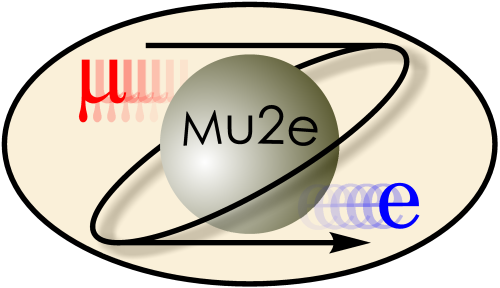

|
Emacs Hints
|
|
| |
| Working groups |
| Blessed plots and figures |
| Approving new results and publications |
| Approval web pages - new results |
| Approval web pages - new publications |
| Mu2e Acronyn Dictionary |
| Fermilab Meeting Rooms |
| Fermilab Service Desk |
| ReadyTalk : Home |
| ReadyTalk : Help |
| ReadyTalk : Toll Free Numbers |
On detsim and mu2egvpm* the editor emacs is available as part of the SLF5 distribution.
As of January 2012, the version is GNU Emacs 21.4.1. On mu2egpvm* the xemacs editor is
also available but not as part of SLF5; it is available as a
UPS product.
As of January 2012, the most recent version is 20.4. To setup this version, make sure
that you have
enabled the old-style UPS/UPD, then
Please configure your editor(s) so that they do not write tab characters to source code
files. Please do configure your editor so that, when you hit the tab key, it inserts the
appropriate number of spaces to achieve the desired formatting.
The short answer is to add the followieng line to the end of your ~/.emacs file
For more details see the discussion on configuring editors not to use tabs.
Even without this change, if you use the emacs editor, you can automatically enable
c++-mode in a geometry or generator configuration file
by adding the following comments at the end of the file:
This technique is described in the emacs manual
under the section that discusses
File Variables.
An emacs mode for editing FHiCL files has been developed and is
accessible directly through the Fermilab common UPS products area.
For those who use the mu2egpvm*.fnal.gov or detsim.fnal.gov machines,
the mode can be enabled by logging on to the machine, and then typing
the following on the command line:
Alternatively, you can download the art-fhicl-mode.el file
from Github.
Create the directory ~/share/emacs/site-lisp/ and move the
art-fhicl-mode.el source code there.Add the following code to your ~/.emacs file:
setup xemacs v20_4
At present there is no version of xemacs installed on detsim but we can ask for it.
What to do about Tab Characters?
I would like to propose the following as a standard practice for Mu2e:
(setq-default indent-tabs-mode nil)
If you are using xemacs, add the same line to your ~/.xemacs/init.el file.
Viewing the Geometry Files with C++ Mode
If you use an editor with syntax highlighting, it is
helpful to view the the Mu2e geometry files and the
Mu2e generator configuration files using
C++ mode with syntax highlighting. This is helpful
because
the language used in these files has a C++-like syntax.
For the time being, these files have a file type of .txt
which complicates the job of automatically selecting
C++-mode when opening the file. In the future we may
change the file type from .txt in order to make it easier to
choose appropriate syntax highlighting.
// Local Variables:
// mode:c++
// End:
The capitalization and the : are important.
If you have syntax highlighting automatically enabled for
c++ mode then these files will be viewed with syntax highlighting.
I will add comments like this to the end of most of the geometry and generator configuration files.
Viewing the FHiCL files with art-fhicl Mode
ups configure art_fhicl_mode
This will add the following lines to the end of your ~/.emacs file:
(load (shell-command-to-string (concat ". " (getenv "SETUPS_DIR") "/setups.sh; setup art_fhicl_mode; printf $ART_FHICL_MODE_DIR/art-fhicl-mode.el")) nil t t)
(add-to-list 'auto-mode-alist '("\\.fcl$" . art-fhicl-mode))
In order to ensure that syntax highlighting is enabled, the following line must also be present in your ~/.emacs file:
; enable color syntax highlighting everywhere
(global-font-lock-mode t)
; extend the search path
(add-to-list 'load-path "~/share/emacs/site-lisp")
; enable color syntax highlighting everywhere
(global-font-lock-mode t)
; load art-fhicl-mode for fcl highlighting, etc.
(load "art-fhicl-mode.el" nil t t)
; associate .fcl files with art-fhicl-mode
(add-to-list 'auto-mode-alist '("\\.fcl$" . art-fhicl-mode))
Note that FHiCL is nearly identical structurally to YAML, and it is possible to use YAML
mode to syntax highlight FHiCL, obtained here. The dedicated
art-fhicl mode is likely to be more helpful, however.
In all cases that are relevant for Mu2e, a properly formatted text file must end in a newline character ( this is the character created by pressing the enter key on your keyboard ). This is true for source code files, FHiCL files, the geometry file and so on. It is also true for the crontab file used to auto-renew your grid proxy.
Some of the applications that digest these files, such as the g++ compiler, are forgiving about a missing terminal newline. Other applications are not. In particular:
If you use emacs, you tell emacs to check for the terminal newline and to add one if it is missing. There are several ways to do this. In your .emacs file you can add the line:
(setq-default require-final-newline t)This will force a newline whenever you save a file. Alternatively, you can add the following to your .emacs file
(setq-default require-final-newline 'visit-save)When this identifies a missing newline, it will prompt you for whether or not it should add a newline.
|
|
|
| Security, Privacy, Legal |
|